Gessler
New Member
- Joined
- Jan 10, 2016
- Messages
- 2,312
- Likes
- 11,249
Seems that inclusion of Lithium-Ion Batteries (LIB) technology is going to be a mandatory requirement under P-75I, alongside AIP.

Navy tilting towards Korean KSS? Proven AIP, Li-ion batteries, VLS tubesSeems that inclusion of Lithium-Ion Batteries (LIB) technology is going to be a mandatory requirement under P-75I, alongside AIP.
View attachment 114811
VLS not a requirement - in fact the version of KSS that's being offered in P75I will not have any VLS according to the Koreans:Navy tilting towards Korean KSS? Proven AIP, Li-ion batteries, VLS tubes
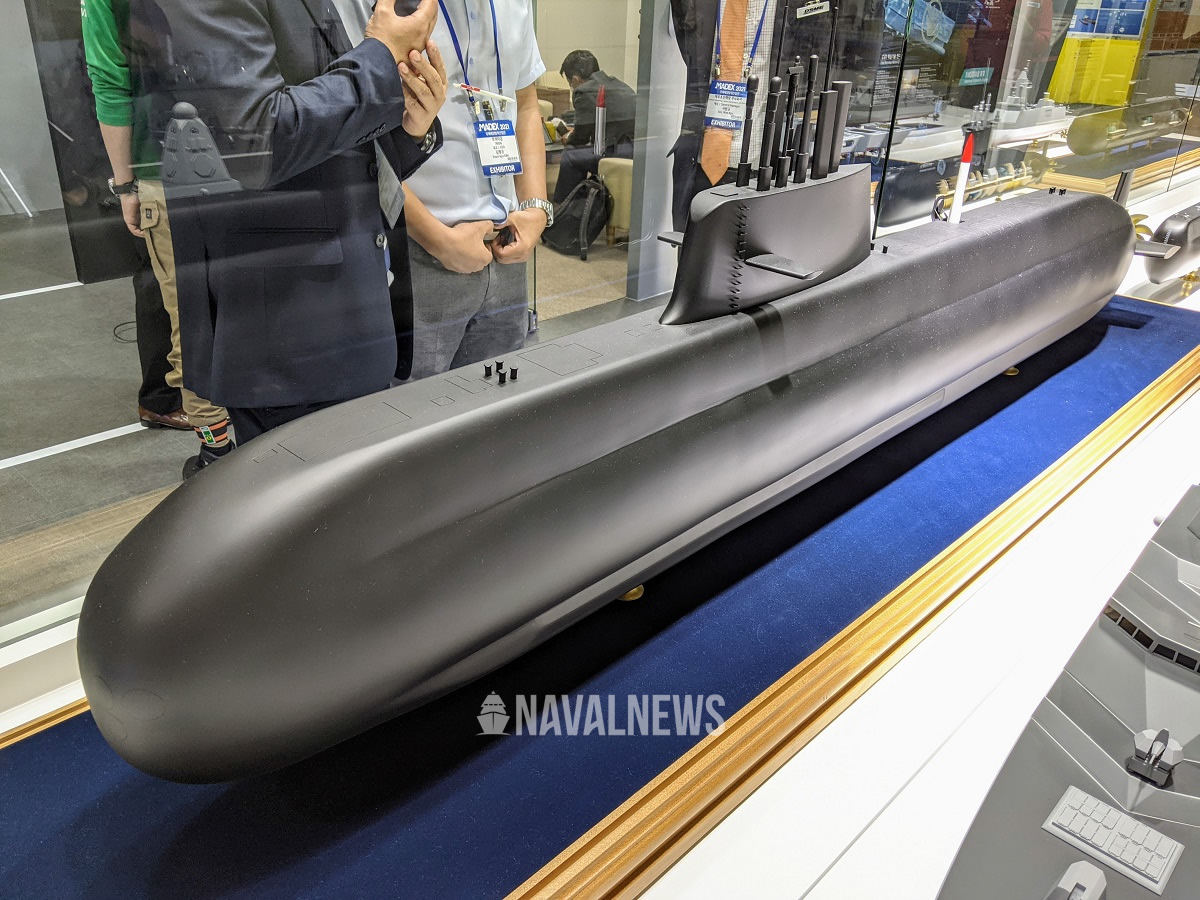
That's a June 2021 article from naval news. There is a more recent one from 3 days ago:version of KSS that's being offered in P75I will not have any VLS
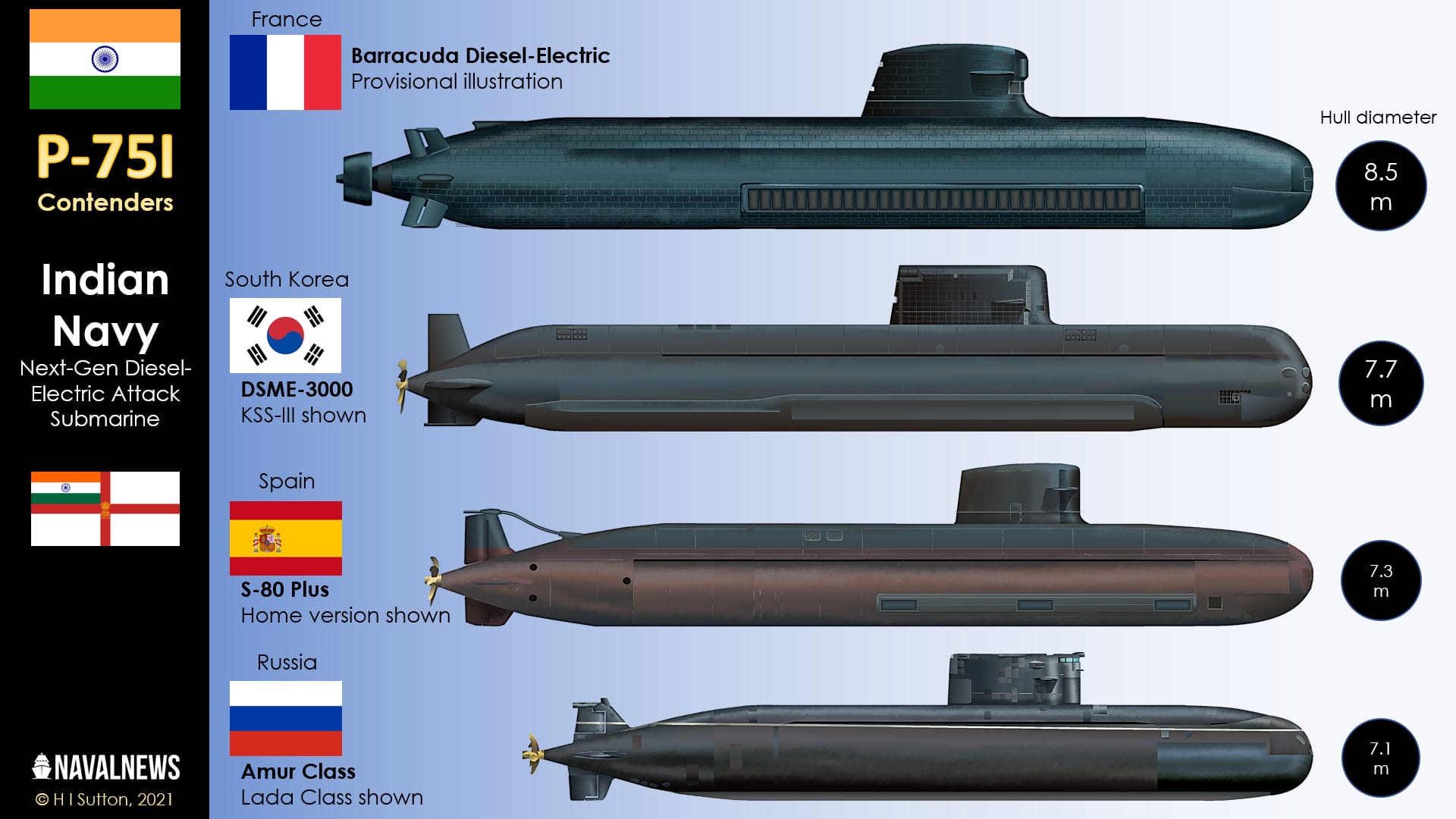
DSME-3000, South Korea’s Missile Submarine
South Korea has recently spread its wings and entered the submarine export game, selling boats to Indonesia. They are understood to be proposing an export version of their home-grown KSS-III design. This is a relatively large non-nuclear boat, likely second only to the Barracuda.
The type comes with German based fuel-cell AIP. The layout, with a hull section essentially dedicated to AIP, suggests that it would not be too challenging to swap it for the Indian alternative.
And South Korea is ahead of most countries in the race to fit lithium-base battery technology to submarines. This promises to extend the endurance of submarines when running on batterie. Naturally this may be attractive to the Indian Navy, even potentially diminishing the importance of AIP.
Its differentiating feature is that it already comes with a six or ten round VLS. In South Korean service this is expected to carry the Hyunmoo 4-4 missile, which is roughly equivalent to India’s K-15 Sagarika but without a nuclear option. While exact dimensions and weights are not available, this at least implies that it could accommodate the similarly sized Brahmos.
Carrying a VLS in such a small submarine likely needs some trade-offs, like fewer weapons slots in the regular torpedo room. But overall the South Korean design seems balanced and highly capable.

That is interpretation of HI Sutton.That's a June 2021 article from naval news. There is a more recent one from 3 days ago:

The 4 Submarines Competing For The Indian Navy's P-75I Program - Naval News
The Indian Navy's P-75I submarines will be larger and much more potent than the Kalvari Class now entering service. They will be the bedrock of India's submarine fleet at a time when the strategic focus is leaning towards China as well as the traditional adversary, Pakistan. There are 4 contenders.www.navalnews.com
Specifically on the DSME-3000
Please see this post also:

Project-75I class SSK Submarines
Govt issues formal tender for 6 submarines under strategic partnership model Along pending project of the Indian Navy for building of indigenous submarines is finally set to kick off as the Ministry of Defence has issued Request for Proposal (RFP) for its mega submarine programme. The RFP...defenceforumindia.com
View attachment 114950
View attachment 114951
The above infographic does show a Brahmos ejecting from the VLS!
The way Indian procurement system works - you meet the requirement, you get full marks. You don't meet the requirement, you get zero marks. Going above & beyond the requirement does not give you any extra marks.
The DRDO AIP was never really meant for P-75I, but only for Scorpene refit. The intention was that the AIP could be ready by the time INS Kalvari comes in for its first major refit. I don't know for sure when that is scheduled.Also for the AIP issue, wasn't the DRDO AIP rejected due to lack of a proof of concept on a working platform, leaving behind only two suppliers in the competition- German ThyssenKrup and Korean Daewoo? (The German company pulled out later due to ToT and localisation demands)
This Japanese choice of removing AIP & sticking with only diesel generators & long-lasting Li-Ion batteries (LIBs) carries on to the next-generation 29SS class submarinesThe first 10 platforms were equipped with an AIP system (4x Kockums sterling engines) in addition to a DE system for a submerged endurance of 6000 nm without surfacing- very close to a nuke sub
- AIP systems require large oxidizer tanks which eat up space for batteries and fuel- significantly lower patrol range despite being larger than Collins
- Penalty on internal space for the crew- crew amenities are inferior to the Collins class
- The final two boats in the Soryu class use a diff propulsion layout beginning with Oryu the AIP system has been completely removed- Only diesel generators and Li-Ion batteries- significant improvement in performance over lead acid systems providing a level of energy density that essentially makes AIP redundant
The Naval Materials Research Laboratory of Indian Defence Research and Development Organisation in collaboration with Larsen & Toubro and Thermax has developed a 270 kilowatt phosphoric acid fuel cell (PAFC) to power the Kalvari-class submarines, which are based on the Scorpène design. All six Kalvari class submarines will be retrofitted with AIP during their first upgrade. It produces electricity by reacting with hydrogen generated from sodium borohydride and stored oxygen with phosphoric acid acting as an electrolyte
 en.wikipedia.org
en.wikipedia.org
You sure? Looks like still on the sail for now.Features of 29SS worth copying:
- diving planes moved from sail to front of hull (like Astute class)
Yes! It was revealed by submarine manufacturer Mitsubishi Heavy Industries only in June 2019 via a presentation & will begin development only in 2025-28, and is targeted for entry into service in 2031. Finding a photograph of the real sub is an impossibility at this point.You sure? Looks like still on the sail for now.
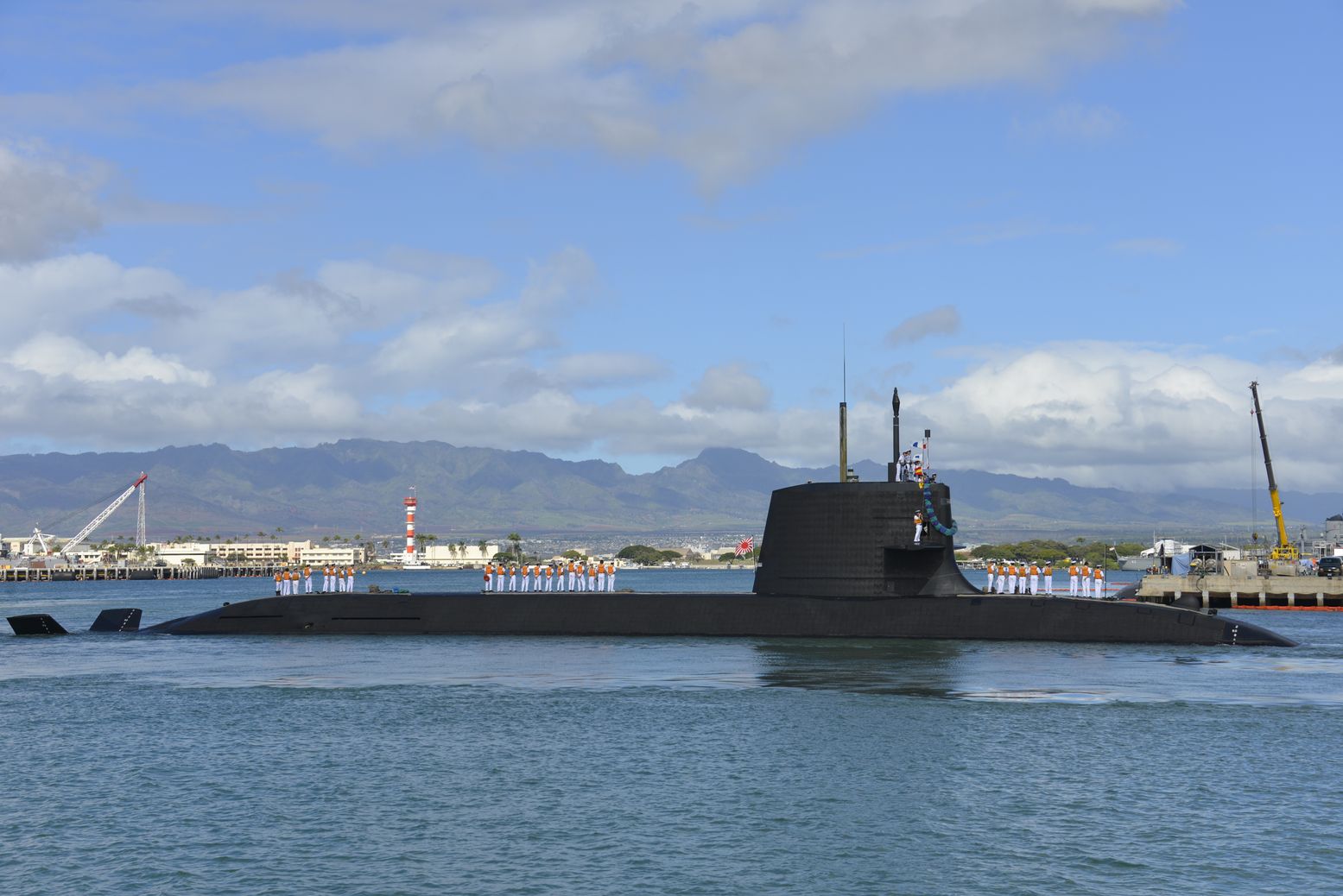
Here's the part I'm most interested in:The 29SS appears to be a further evolution of the LIB-powered Soryu, retaining its same essential hull form and its X-shaped rudder, which improves maneuverability and resilience. However, the Soryu’s bow has been inclined and its tall sail (conning tower) squashed downwards and blended into the hull of the 29SS. Diving planes formerly located on the sail are moved to the front of the hull.
These modifications appear intended to improve aquadynamics, thus enhancing acoustic stealth and decreasing drag, which could result in increased speed and range. A “floating floor structure that can mitigate vibrations and shocks” may also make the 29SS quieter.
The 29SS’s shrouded propulsion system configuration suggests a heavier pump jet propulsor system instead of a conventional propeller. Pump-jets are unlikely to produce noisy cavitation, and allow quieter running at higher speeds. One source claims a “thirteen-blade” pump-jet would be 20 decibels (two orders of magnitude) quieter than the seven-bladed propeller on the Soryu. The incorporation of pump jets suggests the 29SS may be designed to cruise at higher speeds for longer than is typical of a diesel-engine submarine.
The 29SS’s bow sonar will reportedly be optimized for discretion, long-distance detection, and also function better in shallow coastal waters. This last is particularly a concern in the rocky shallows off the Korean peninsula, in which North Korea operates dozens of small submarines that could prove difficult to detect.
The 29SS’s side-array hydrophones will reportedly use a fiber optic sonar which “senses sound not by the pressure of sound waves but by the interference effect of light.” This sensor may also be effective for detecting electromagnetic emissions.
There will also be a towed sonar array for long-distance, omnidirectional tracking, a reverse-search sonar array, and a broadband transmission array.
Returns from multiple sonars will reportedly be integrated into a synthetic sensor picture on the submarine’s new combat system, which can perform target-motion analysis and suggest firing solutions.
So far, there’s no evidence the 29SS includes vertical launch cells for missiles. While submarines can deploy missiles like the UGM-84 Harpoon out of their torpedo tubes, vertical cells allow ripple-fired salvoes that are more likely to overwhelm a target’s air defenses.

You sure? Looks like still on the sail for now.


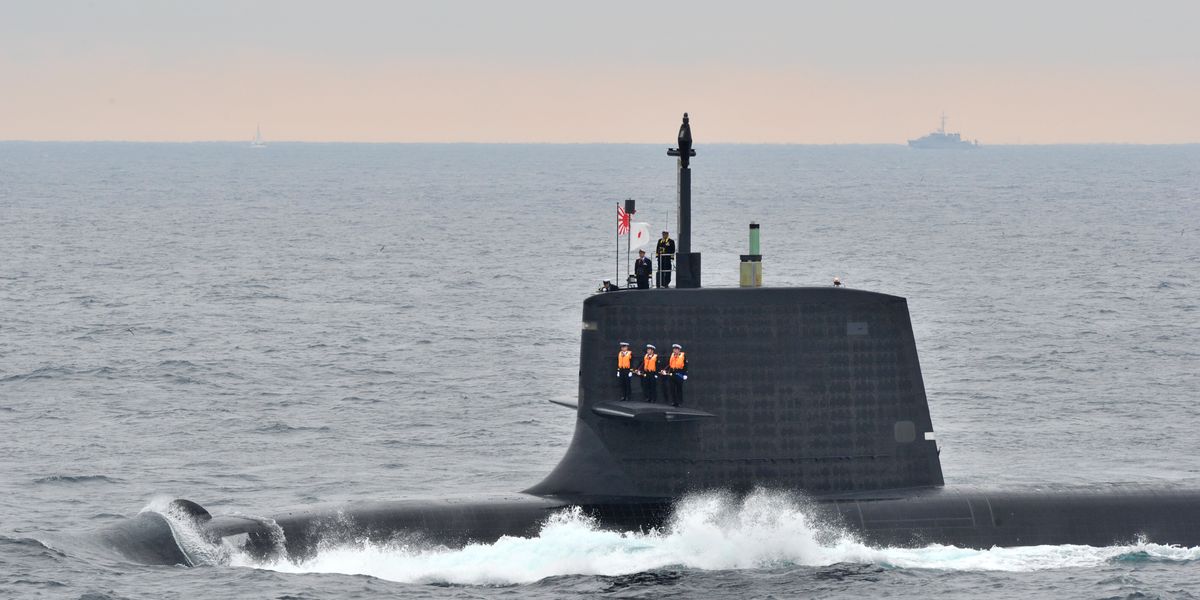
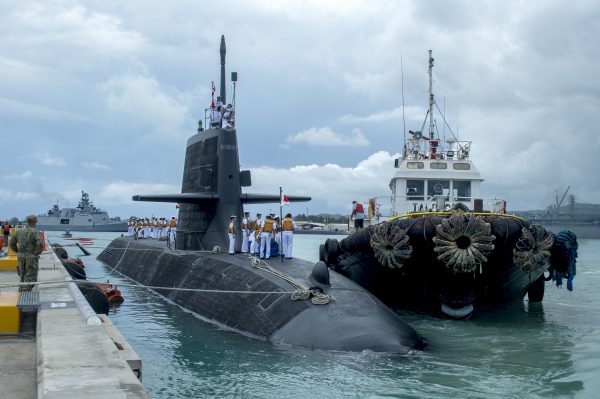
Since retrofitment is also sought- may be the Scorpenes can switch from LABs to LIBs in refit & junk the idea of plugging in any AIP & if the propellors could be replaced with pumpjets from France that would be a deadly combo.The Indian Navy was seeking a system that could potentially revolutionise the performance of its conventional (non-nuclear) submarines. The Indian Navy's RFI document envisages the development of a 'high-capacity' lithium-ion battery system. The Indian Navy wants the system to be capable of being refitted to in-service submarines that use lead-acid batteries.
The Indian Navy has specified a 20-month deadline for the lithium-ion battery project from the date a contract is awarded.
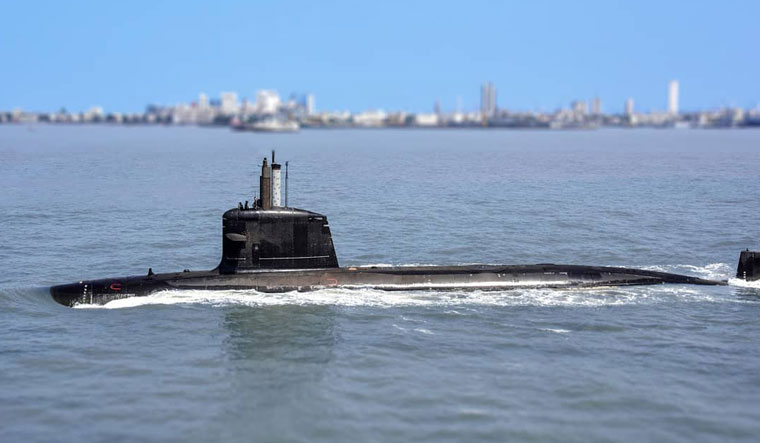

Report: Russia pulls out of Indian Navy's P-75I submarine tender, due to lack of functional AIP system.
Germany too will take part, only if changes are made in the tender.
#Russia says it won't bid for #IndianNavy P75I #submarine plan, offers upgraded #kilo class . Essentially leaves #SouthKorea as the only real participant left.
Imho the P75I is dead in the water now.

Russia says it will not bid for Indian Navy's new submarine plan, offers upgraded kilo class
The Russian side has offered India upgraded Kilo class submarines - the type that forms the bulk of the current conventional fleet - but has decided to withdraw from the contest citing technical reasons.economictimes.indiatimes.com
Russia has said that it will not take part in the Indian Navy's ongoing procurement plan for new submarines, confirming that the Indian government has been formally notified of the decision. The Rs 43,000 crore plan to acquire six new submarines under Project 75I has also hit delays early in the process, with other foreign contenders and Indian partners seeking additional time to formulate their proposals.
The Russian side has offered India upgraded Kilo class submarines - the type that forms the bulk of the current conventional fleet - but has decided to withdraw from the contest citing technical reasons.
"The Russian side has previously confirmed its interest in participation in this programme and suggested a platform based on the design of Project 677E submarine Amur-1650. However, after receiving and studying the RFP finalising terms and conditions of the tender, the Russian side has decided not to participate in the tender for technical reasons," a Rosoboronexport spokesperson told ET.
As reported earlier, the German side, too, has written to the government citing inability to take part in the contest due to technical reasons, including liability clauses and an inadequate budgetary allocation. The German side, however, has now indicated it can take part if changes are made to the tender requirements. South Korea, another contender, is also believed to have concerns about technology transfer.
Pointing to the long legacy of Russian origin submarines in the Indian naval fleet, the Rosoboronexport spokesperson said offers have been made to supply upgraded Kilo class submarines. "To reinforce the Indian submarine fleet, the Russian side has offered both supply of new diesel-electric submarines of time-tested Project 636, and supply of Project 877 submarines after their withdrawal from service with the Russian Navy and upgrade," the spokesperson said.
The Navy's ambitious plan to build six submarines in India under the Strategic Partnership model has hit choppy waters in its early stages, with the condition of a functional Air Independent Propulsion (AIP) spelled out in the technical documents ruling out most foreign collaborators from the project, a move that was followed by sharp protests.
Navy won't budge on TOT terms if they don't wanna participate then they can leave it , they have their own reasons we have our own , neither we can budge , nor they have a functional Aip .
Report: Russia pulls out of Indian Navy's P-75I submarine tender, due to lack of functional AIP system.
Germany too will take part, only if changes are made in the tender.
#Russia says it won't bid for #IndianNavy P75I #submarine plan, offers upgraded #kilo class . Essentially leaves #SouthKorea as the only real participant left.
Imho the P75I is dead in the water now.

Russia says it will not bid for Indian Navy's new submarine plan, offers upgraded kilo class
The Russian side has offered India upgraded Kilo class submarines - the type that forms the bulk of the current conventional fleet - but has decided to withdraw from the contest citing technical reasons.economictimes.indiatimes.com
Russia has said that it will not take part in the Indian Navy's ongoing procurement plan for new submarines, confirming that the Indian government has been formally notified of the decision. The Rs 43,000 crore plan to acquire six new submarines under Project 75I has also hit delays early in the process, with other foreign contenders and Indian partners seeking additional time to formulate their proposals.
The Russian side has offered India upgraded Kilo class submarines - the type that forms the bulk of the current conventional fleet - but has decided to withdraw from the contest citing technical reasons.
"The Russian side has previously confirmed its interest in participation in this programme and suggested a platform based on the design of Project 677E submarine Amur-1650. However, after receiving and studying the RFP finalising terms and conditions of the tender, the Russian side has decided not to participate in the tender for technical reasons," a Rosoboronexport spokesperson told ET.
As reported earlier, the German side, too, has written to the government citing inability to take part in the contest due to technical reasons, including liability clauses and an inadequate budgetary allocation. The German side, however, has now indicated it can take part if changes are made to the tender requirements. South Korea, another contender, is also believed to have concerns about technology transfer.
Pointing to the long legacy of Russian origin submarines in the Indian naval fleet, the Rosoboronexport spokesperson said offers have been made to supply upgraded Kilo class submarines. "To reinforce the Indian submarine fleet, the Russian side has offered both supply of new diesel-electric submarines of time-tested Project 636, and supply of Project 877 submarines after their withdrawal from service with the Russian Navy and upgrade," the spokesperson said.
The Navy's ambitious plan to build six submarines in India under the Strategic Partnership model has hit choppy waters in its early stages, with the condition of a functional Air Independent Propulsion (AIP) spelled out in the technical documents ruling out most foreign collaborators from the project, a move that was followed by sharp protests.
That's true, but now 10+ years have passed with no work on a local design. Some pertinent tweets on why scorpenes may be unsuitable and also agree with IDDM (supplemented with tech bought from overseas where there is a gap) being the way forward as opposed to SPM. IN like the other two services is risk averse and cash strapped for P75I to get anywhere unless SoKo pulls a rabbit out of the hat because of being a newcomer and if GoI seriously pursues it with them- coughing up the money & buying out their AIP, LIB & VLS tech/design & pumpjet propulsors from French and MII in a public or private yard.Leave all these Chutiyapa and give additional orders of scorpenes with latest technologies. We have spent a long long time in this Chu***a process of tendering. We would have rather designed an ultra modern submarine instead in this time frame. Rather than going for outright purchase, buy required technologies instead if don't have it.
If we can not finalize a tender in 10 years, this means that we could have made an excellent design and realized critical technologies in this time. If we take toooooo long time in even purchase, we may get a n indigenous product in mean time. If we start MMRCA today, we can get MWF by the time MMRCA arrives. So better to go for indigenous product rather than going for purchase. Since we have made Scorpene here and bought Rafale after a lots of efforts, it is better not to do this tiresome exercise again. Either repeat the order or make it ourselves.That's true, but now 10+ years have passed with no work on a local design. Some pertinent tweets on why scorpenes may be unsuitable and also agree with IDDM (supplemented with tech bought from overseas where there is a gap) being the way forward as opposed to SPM. IN like the other two services is risk averse and cash strapped for P75I to get anywhere unless SoKo pulls a rabbit out of the hat because of being a newcomer and if GoI seriously pursues it with them- coughing up the money & buying out their AIP, LIB & VLS tech/design & pumpjet propulsors from French and MII in a public or private yard.
P75 uses DRDO's AIP which will not be operational till c2026 & even then, will not power the larger boats of P75I. P75 subs are smaller and therefore lack land attack capability. P75I demands much more tech transfer & localisation than P75.
Basic facts Kanchan da is missing! Defence is a seller’s market not buyer’s market! Speaking “national interest” doesn’t get anyone anywhere here. We can keep sitting on that hill & not induct any new sub until 2040. The tender requirements & the budget are on different planes! Navy is looking for a shrink wrapped custom designed product for its RFP and also the IP so that it can keep making design iterations. But such a customisation ofcourse costs a lot of money and also is new. So obviously both risks and costs zoom. Expecting such a customised product that involves Billions of $$ in new design costs and testing and also the IP for it, at the cost of a 40 year old submarine design is self delusion and ignorance to say the least. And almost all of these require the buyer to take on risks. Navies world over partake in the technological journey pay for the costs and failures and get the product they want. This RFP makes me think that the Navy and MoD wants to keep a hands distance off the manufacturing and only want a final product. That’s not how business works. Technically, we want a 3000T sub with an AIP and a VLS. I'm labeling this Medium Multirole Combat Submarine(MMRCS). We want a product with "India specific enhancements" to be made locally on a new mfg line + the IP @ cost of a base model built at their shipyard in 2010 prices!! India's MMRCS saga continues! Formulate tender such that no OEM would be interested in & see how they all opt out from competing! Will Indian Navy & MoD learn?
Russia says it won't bid for Indian Navy's new submarine plan, offers upgraded kilo class.With this kind of risk and liability offloading, no Indian pvt sector SP partner or foreign OEM would want to compete. Only DPSU shipyards can take on these kind of liabilities.
View attachment 137899
Navy wants P-76 to be indigenous, that’ll come from the learning’s of P-75I. But the gap is just too large. Going the consultant route also cost Atleast $3-5 Billion just for the consultation. Is India ready to cough up such money?
The ask excludes most OEMs from the competition and will not result in competitive price or a deeper ToT than we got in the past from the Germans ,French or Russians ? Only IDDM can meet our specific requirements.
Are we again moving towards quashing of RFP?
God knows why the Navy/MoD wants a ToT if they never build on it. What will you do with the know-how/why absorbed during the P75 project? Again P75I has ToT clause but after 10 yrs they will start scouting for different class of subs If this continues then we surely will never be where South Korea is. Not even after 50 years.
This might just be a #tejas moment for the #IndianNavy which now has no reason to go in for a new #import design given nobody is ready to meet it's lofty requirements . We should take this as a sign & double down on domestic #Subamrine construction with additional Scorpenes .
Every single one of the mega deals pursued under SPM (NUH, NMRH, MRFA, P75I) has fallen apart and zero results 8 years later can be seen
Yet to the services all is well
Generations of officers come and go handing over junk from one to another
Or not.If we start MMRCA today, we can get MWF by the time MMRCA arrives.
Saurav Jha of Delhi Defence Review says the 114 MRFA will happen & Rafale makes a lot of sense.Or not.
Unfortunately no indian weapon program end in the estimated time.
I don't know if MMRCA will be inked, but at least some more Rafale will be ordered, because IAF is very happy with it, and because you pay for special features. It would be a scrap not to spread this amount on more than 36 jets.
My estimation is a final quantity between 72 and 108.
And don't forget the 2 bases accomodated to Rafale can easily host 36 birds each.... (Saint Dizier air base in france hosts more than 45 jets).
